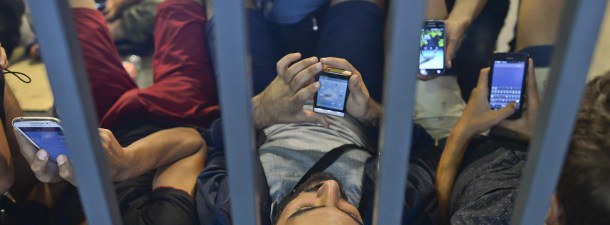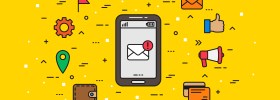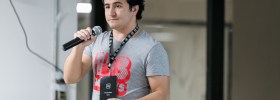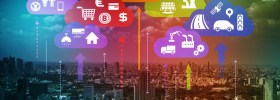BARCELONA—Some might say that people desperate to survive shouldn’t be so worried about getting on WhatsApp or Facebook. But in a time of desperation, social media can be as important as food or shelter.
“A selfie is the easiest way to share with your family that you are OK.”
Founder of Developing Telecoms online magazine and moderator of the fireside chat on mobile inclusion at this week’s Mobile World Congress, Alec Barton went onto say that’s not all. The first questions at stops along a refugee’s long journey are: “Where can I charge my mobile, what network can I connect to, and what’s the WiFi password. The products and services that we as [the telco] industry provide are right up there with shelter, food and safety.”
In fact, “the need to communicate and the need to eat are often competing in poor communities,” explained Robert Kirkpatrick, head of Global Pulse. In fact, airtime purchases have even become a proxy for household income at an impressive .89 correlation of accuracy.

(Credit:www.jisc.ac.uk)
Wednesday, at the Mobile World Congress, Telefonica became one of the newest telco members to sign the GSMA Humanitarian Connectivity Charter, which outlines a commitment among Mobile Network Operators to work together before, during, and after disasters to assure this life-saving and life-assuring connectivity. We’ll get to the life-saving part in a bit, but it’s important to also remember a mobile is a link to life.
Jacob Korenblum, who as part of Souktel Digital Solutions has worked extensively with the refugee camps in Jordan, as well as in countries at war like Syria, Iraq, Libya, and Somalia, explained that “Even though communities are affected by crisis, people are still people, [despite] an assumption that people immediately become refugees,” and stop being normal human beings. “At the same time they are still a mobile user. People want to listen to music. People want to share photos. People want to share content with their friends. That’s their way of coping. It’s not only emergency services but telecoms working together to restore service so people can still do the boring day-to-day things on their phone.”
Plus, when you’re going across risky terrain and unknown safety situations, your mobile simply encased in a plastic bag becomes not only your way to connect, it becomes your wallet, your map, and a part of proving your identity.
And your cell phone—even the basic $20 feature phone—provides a wealth of data to both first responders and policy makers.
“A census every five or ten years isn’t appropriate in our changing world to know how things are working. It’s not just about planning, it’s about making decisions constantly.” said Kirkpatrick. This is where real-time, location-based, context-based mobile data is priceless.
Mobile movement patterns don’t just follow large-scale human migrations, but they can give early warnings to outbreaks of disease and food security issues. UNICEF’s U-Report is now present in 19 countries where boy scouts and girl scouts receive one SMS question a week, asking the kids things like “Do you see yellow leaves on your banana trees?” which they in turn the organization was able to use to quickly map where a banana plight had hit across the country. This is all part of UNICEF’s goal of better communicating with communities in order to empower those most affected to decide what is best from them—actually listening to the proverbial horse’s mouth before listening to big-shot policymakers.
The Twitter API has been used to map locations after earthquakes like in Nepal and the Paris terrorist attack, as well as instances of the flu. Even persistent 140-character complaints about increases in food pricing have become an incredibly accurate inflation indicator.
Just airtime gives incredible insights into how populations are displaced because of war, poverty and natural disaster, enabling organizations to better target humanitarian assistance where populations are assembling. This data allows us to understand quickly how diseases are spreading, including influenza, cholera, dengue, malaria and, soon, the Zika virus. Increased airtime during a drought or flood can point to areas of greater need for first responders, signaling a greater density of people calling for help in countries that don’t have access to 9-1-1 type services.
And connectivity is about the next steps too. Eduardo Puig, Telefonica’s director of stakeholder engagement, said the telecom’s short-term goal is to work with other providers to ensure connectivity and communication for first responders, while the mid- to long-term goal is giving refugees reliable access to the Internet and information so “they can get education and learn the language of the country to settle down in,” as well as local information on how to get a job and how to fill out amnesty visa paperwork, in order “not only to give them connectivity but to help them integrate themselves.”
Header: Independent.co.uk









